Junkyard Gem: 1971 Mercury Comet 2-Door Sedan
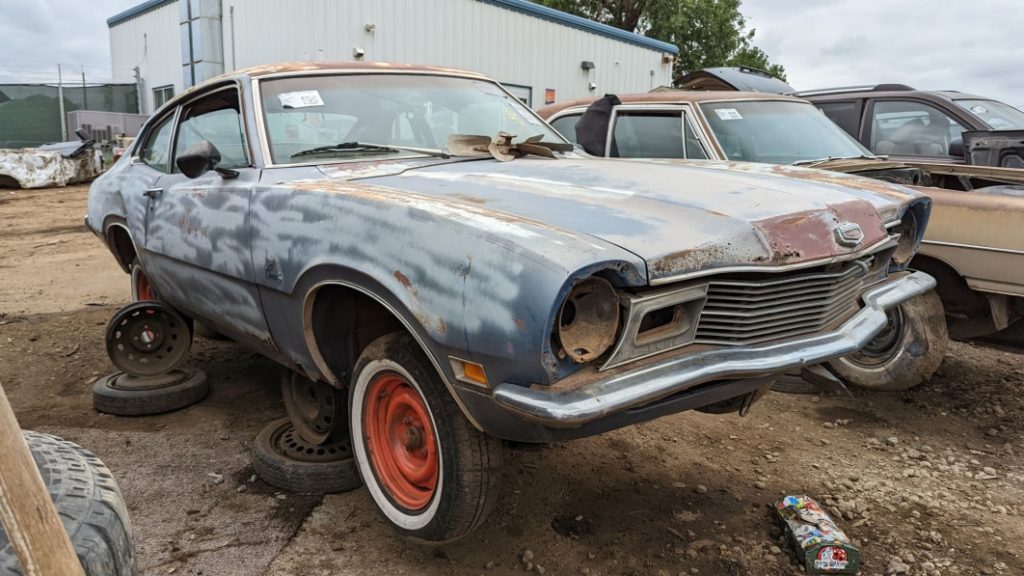
When Ford introduced the original Maverick for the 1970 model year, Dearborn tradition required that a Mercury-badged version be created. That car ended up being the Comet, built from the 1971 through 1977 model years. Here’s one of those first-year Comets in rough but recognizable condition, found in a Denver self-service yard not long ago.
The Comet name had spent the 1960s affixed to the flanks of Mercurized Ford Falcons (1960-1965) and Fairlanes (1966-1969). Since the Maverick was the successor of the Falcon — sales of which went into an irrecoverable downward spiral once its sportier Mustang first cousin hit the streets — it made sense to move the Comet name over to the Mercury version.
Nearly every American Mercury model ever sold was a U.S.-market Ford model with a different name and some gingerbread slapped on. Notable exceptions to this tradition include the 1999-2002 Mercury Cougar (mechanically based on the Contour but with a unique body) and the 1991-1994 Mercury Capri (an Australian-built mashup of Mazda components borrowed from the Ford Laser).
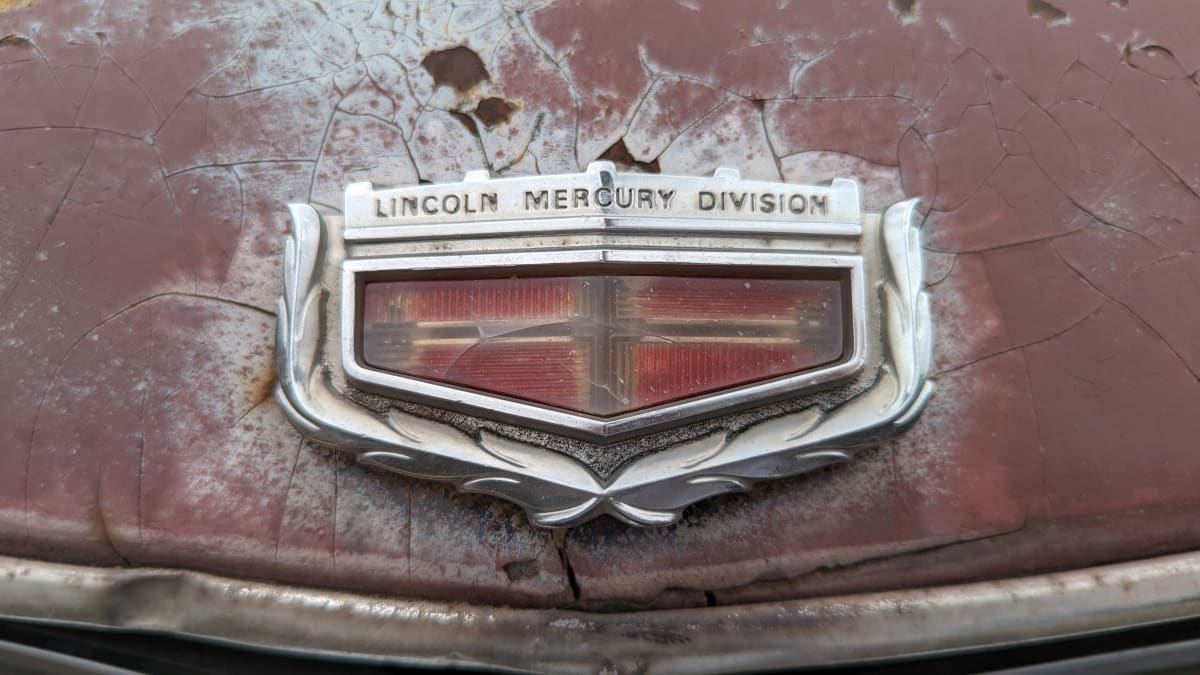
The Comet was by far the cheapest Mercury model available in 1971, though it was considered more prestigious than its Maverick counterpart. The price tag on the ’71 Comet two-door sedan started at $2,217 (about $16,505 in 2022 dollars), while the ’71 Maverick two-door sedan cost $2,175 ($16,193 today).
Meanwhile, AMC would sell you a new Hornet two-door sedan for one dollar less than a Maverick, Chevrolet had the Nova coupe for a dollar more than the Maverick, and Plymouth offered the Valiant Duster for $2,313 ($17,220 now). Toyota had a Maverick competitor as well that year, with the Corona at $2,150 for the sedan and $2,310 for the coupe. Having driven every one of the aforementioned models, I’d take the Duster if I went back in time and had to choose one (as a 1969 Corona owner, I’m not a fan of the 1971 facelift, though the Corona’s build quality beats the Duster’s).

The build sticker on this car tells us that it was built at the Kansas City Assembly Plant (where Transits and F-150s are made today) and sold through the Los Angeles district sales office (there was a DSO in Denver, so it’s a near-certainty that this car didn’t start out in Colorado). The paint started out as Bright Blue Metallic (it’s neither bright nor metallic 51 years down the road) and the interior was done up in Medium Blue Cloth & Vinyl.
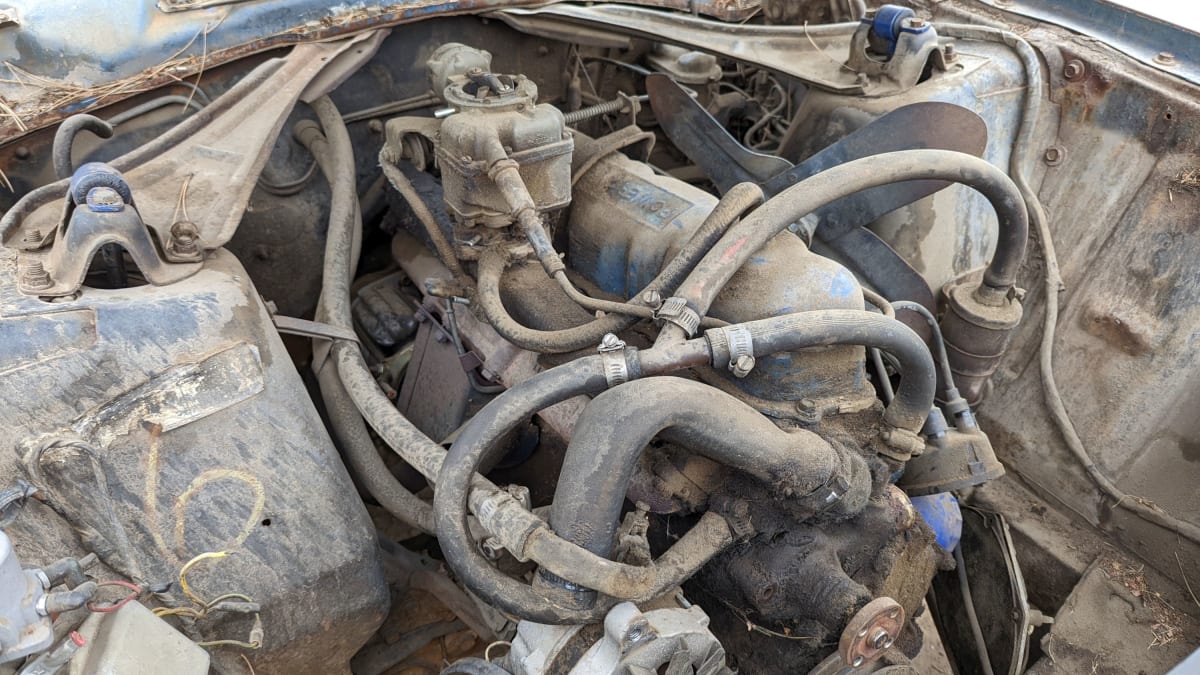
The build sticker says the original engine was a 200-cubic-inch (3.3-liter) pushrod straight-six, rated at 115 horsepower (and perhaps this is that very engine, though swaps are rampant on Detroit cars of this era). That’s a 15-horse upgrade over the base 170-cube six, and it cost the original purchaser an extra $39 ($290 in 2022 bucks). This engine served as the basis for the HSC four-cylinder designed for the Ford Tempo a bit more than a decade later. A 250ci six with 145 horses and a 302ci V8 with 210 hp were also available in the 1971 Comet.
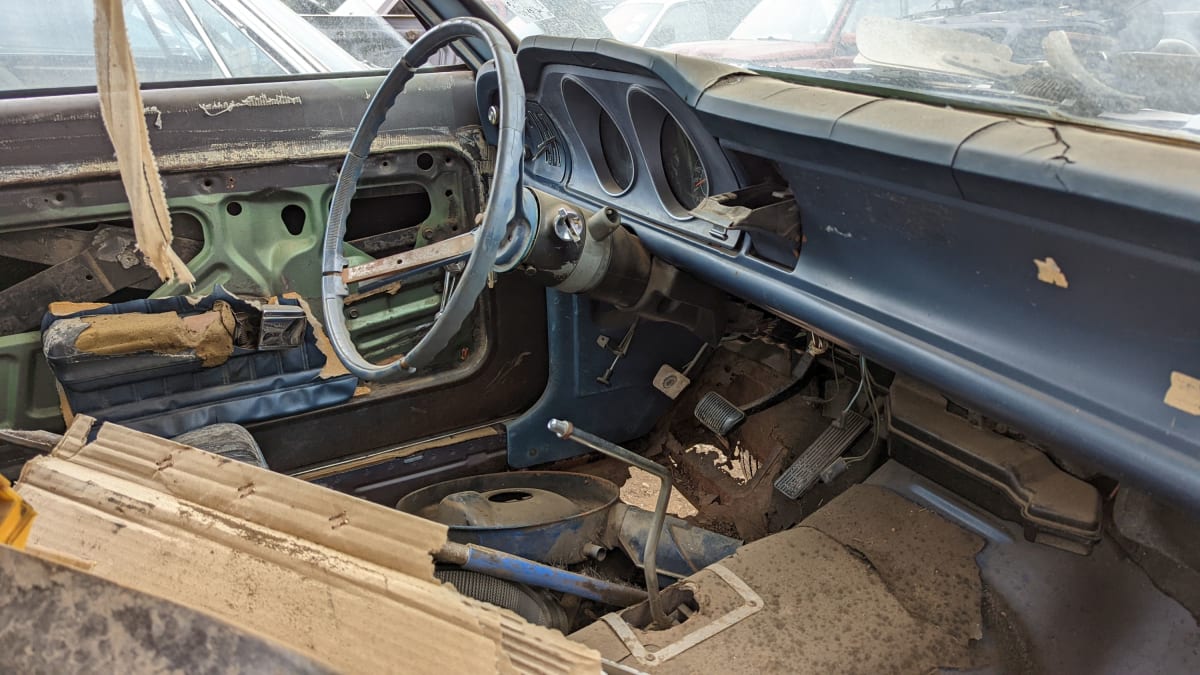
The base transmission in the 1971 Maverick/Comet was a three-speed manual; the Maverick had a “three-on-the-tree” column-mounted shifter as base equipment while the Comet got a sportier floor-mounted shifter at no extra cost. No four-speed manual was ever available from the factory on a highway-legal U.S.-market 1970-1977 Maverick or Comet (though I’m sure some dealers installed them in new cars), but a three-speed automatic was available for $183 extra ($1,362 today) on the 1971 Comet.
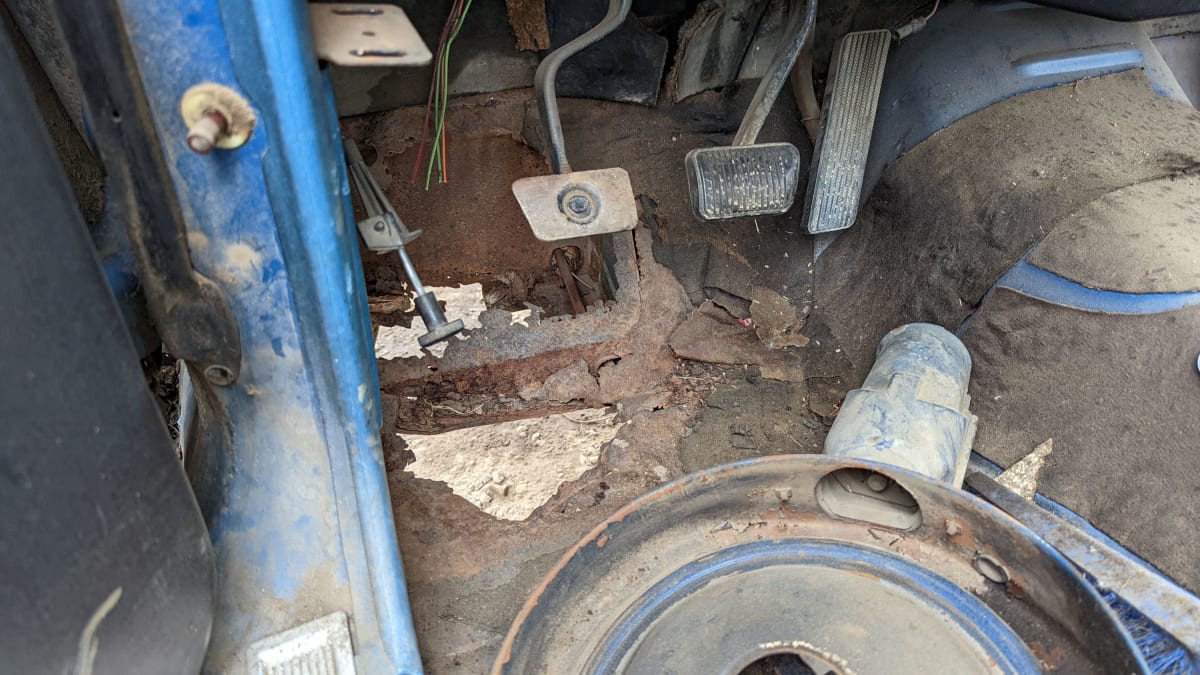
All in all, a pretty cool economy car from a half-century ago, and its two-door layout makes it seem like a great candidate for some modern running gear and a general sprucing-up. Unfortunately, there’s rust. Oh yes, there’s rust. Decades of rain and snow getting into the passenger compartment have eaten big holes in the floors, for starters.
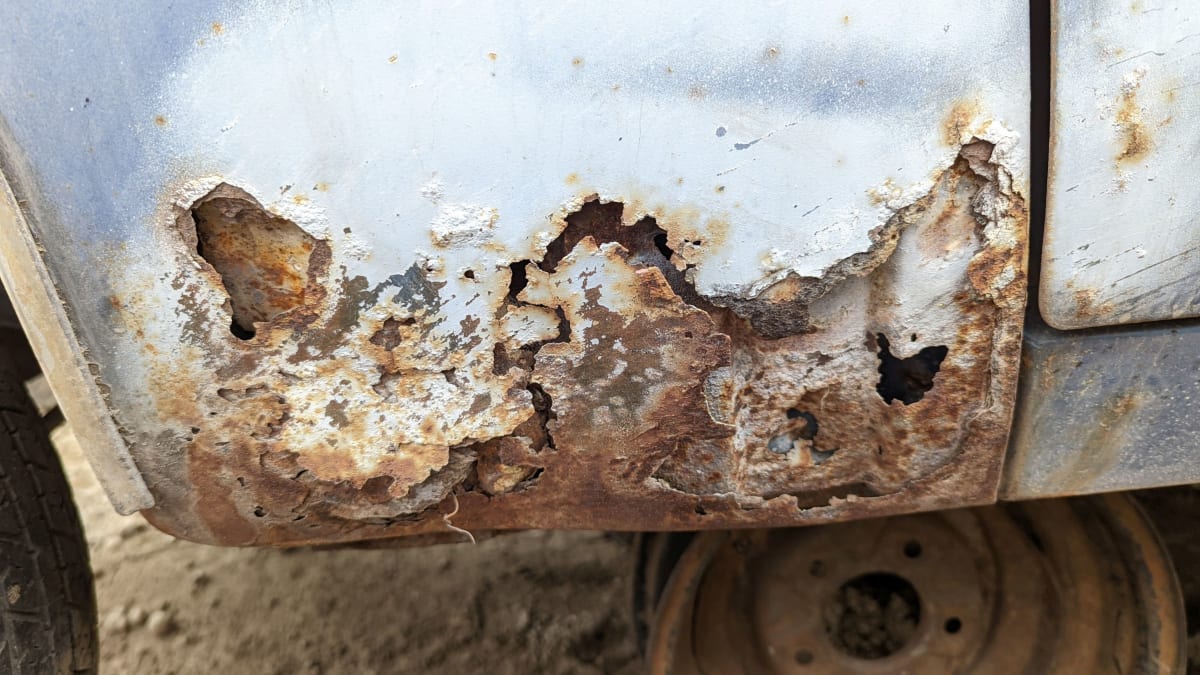
Then there’s the rot in the usual places. It’s repairable, but the cost would be a lot more than the value of the end result.
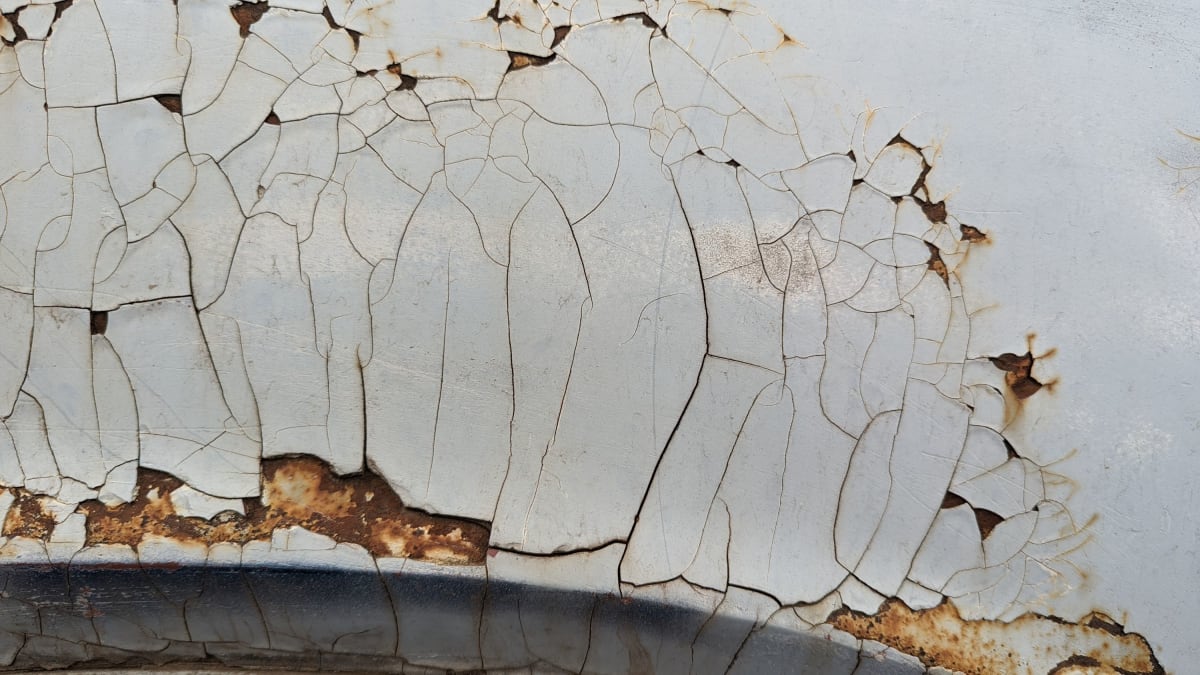
The body has some alarmingly thick layers of body filler, hiding who-knows-what old damage.
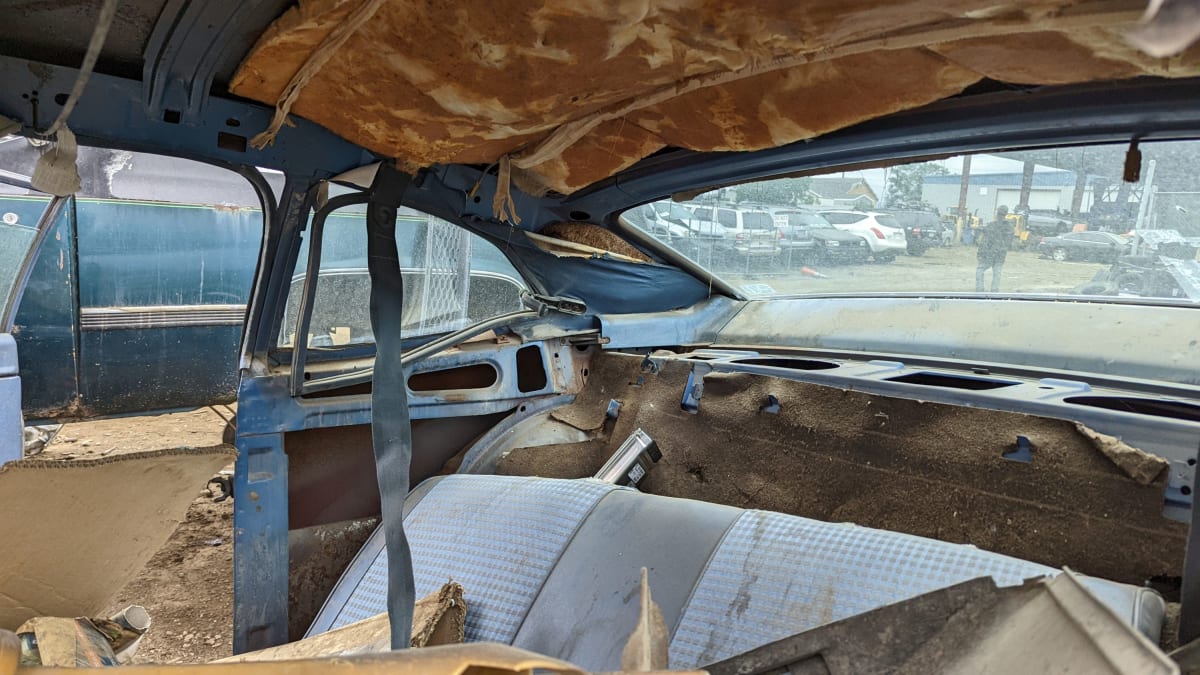
The interior has been thoroughly ravaged by the elements as well. A 1971 Mustang in this condition might be worth restoring, but not a Comet.
Bobby Hull thought it was nifty.
A small car can only be first… if it lasts.




